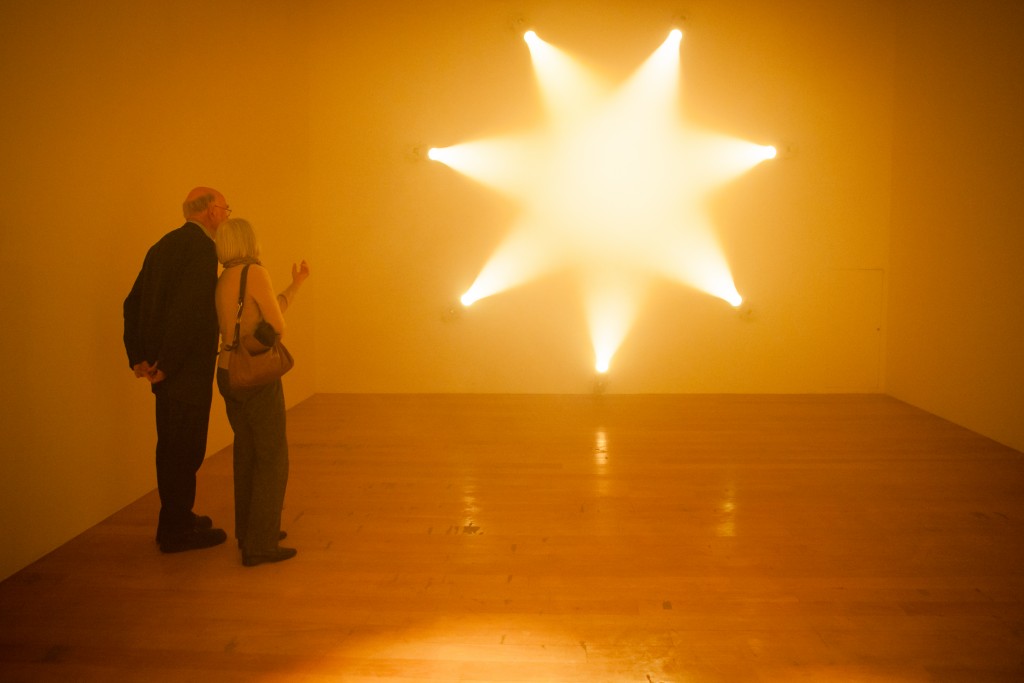The Fruitmarket Gallery is a contemporary arts centre in Edinburgh, and a Partner of Culture Republic. The gallery exhibits some of the world’s most important Scottish and international artists and aims to make it easy for everyone to engage with art, welcoming all audiences. They’ve done a lot of work on embedding equalities within the organisation and last year they established their Equalities Policy and Action Plan. We spoke to Caitlin Page, Learning Programme Manager & Equality Officer at The Fruitmarket Gallery, to find out more about the approach they’ve taken and what they’ve learnt from the process so far:
Q. How did you approach your Equalities Policy and Action Plan?
We began thinking about updating our policy in line with plans for our building development and changes to the Equality Act 2010. I did some research funded by Engage to visit galleries and museums undergoing building developments and who had also embedded equalities into their way of working. I visited organisations of similar size and scope of programme to us, like Camden Arts Centre, and bigger organisations with dedicated posts for access and equalities strategy and delivery including the Tate and V&A. Following this we had training as a whole staff team, including a member of our Board, as a first step to developing a policy and action plan together.
Q. What has the impact been? What are you most proud of?
We’ve had our policy and action plan in place since February 2014 and have made some small but significant changes to our work. This includes making equalities a core value that staff work towards, updating and revising our access information, subtitling our interpretation films and making our print accessible. The research and training has really fed into our building development and helped conversations with the architects. We’re also continuing to work with Flip, who provided brilliant staff training for us, and will help us consult with audiences for the next stage of our building development. Developing the policy as a team and everyone taking ownership of tasks means it’s really been taken on by everyone, rather than sitting in one role or with one person. The fact that we’re all thinking about equalities in everything we do is a real achievement.
Q. What was the biggest obstacle or difficulty you faced?
That it takes time to think differently, and this is an ongoing process as our attitudes and assumptions are continually challenged. As a small staff team it was easier for us to go through the process of having training and developing the policy together which means we have an approach that everyone believes in and can sign up to.
Q. What was your most important learning from the process?
Developing an active, whole organisation approach to equalities isn’t easy. A lot of the work is new territory and requires a shift in thinking. One of the most important things for everyone was learning about the social model of disability, where people are understood to be disabled by the way society is organised, rather than by their own impairments. This means that when barriers are removed people can be independent and equal in society, rather than disabled by it. This defined our focus on removing as many barriers as possible that might prevent people from accessing our services or working for us.
Q. How do you monitor the effectiveness of your policy?
We talk about it weekly in our staff meetings and review it more formally through quarterly focused updates and annual reports that go to our Board. We also have a member of our Board as an appointed Equalities champion to specifically support our work in this area.
Q. What advice would you give other arts and cultural organisations?
Choose a focus if you can. While being broadly inclusive is a good thing and universal themes can cut across diverse identity categories and group experiences, there’s a danger that if you try to do everything brilliantly your approach is in fact diluted and you’re not really doing much at all. Our policy focuses on disability access as the thing we really want to get right as that makes most sense for us now as we address access issues with our current building and aim to get it right for the new one. You’ll find that removing barriers with a particular focus in mind – for example subtitling films for the hard of hearing, means you open up access for more people. In this example it might be those with English as a second language or those who appreciate the further clarification subtitles bring.
Q. Is there anything else you want people to know about your work in this area?
The training we had with Flip was excellent, and really gave staff the courage not to be scared to approach people and explain the deficiencies in our building (problems with our lift breaking, for example) and see if there are ways around it. They have helped us to be proactive and matter of fact rather than worried or embarrassed about engaging with people and finding solutions – that one size doesn’t fit all and it’s always best to be personable, and to ask.
On 21 January Culture Republic are running a Disability Equality Planning workshop led by Flip. The hands-on session will explore the legislation, language and attitudes to disability that you need to know about; present examples of good practice in inclusivity and planning from across the cutural sector and help you and your team work on a tailored Equality Action Plan for your organisation.
Main image credit: Sally Jubb Photography